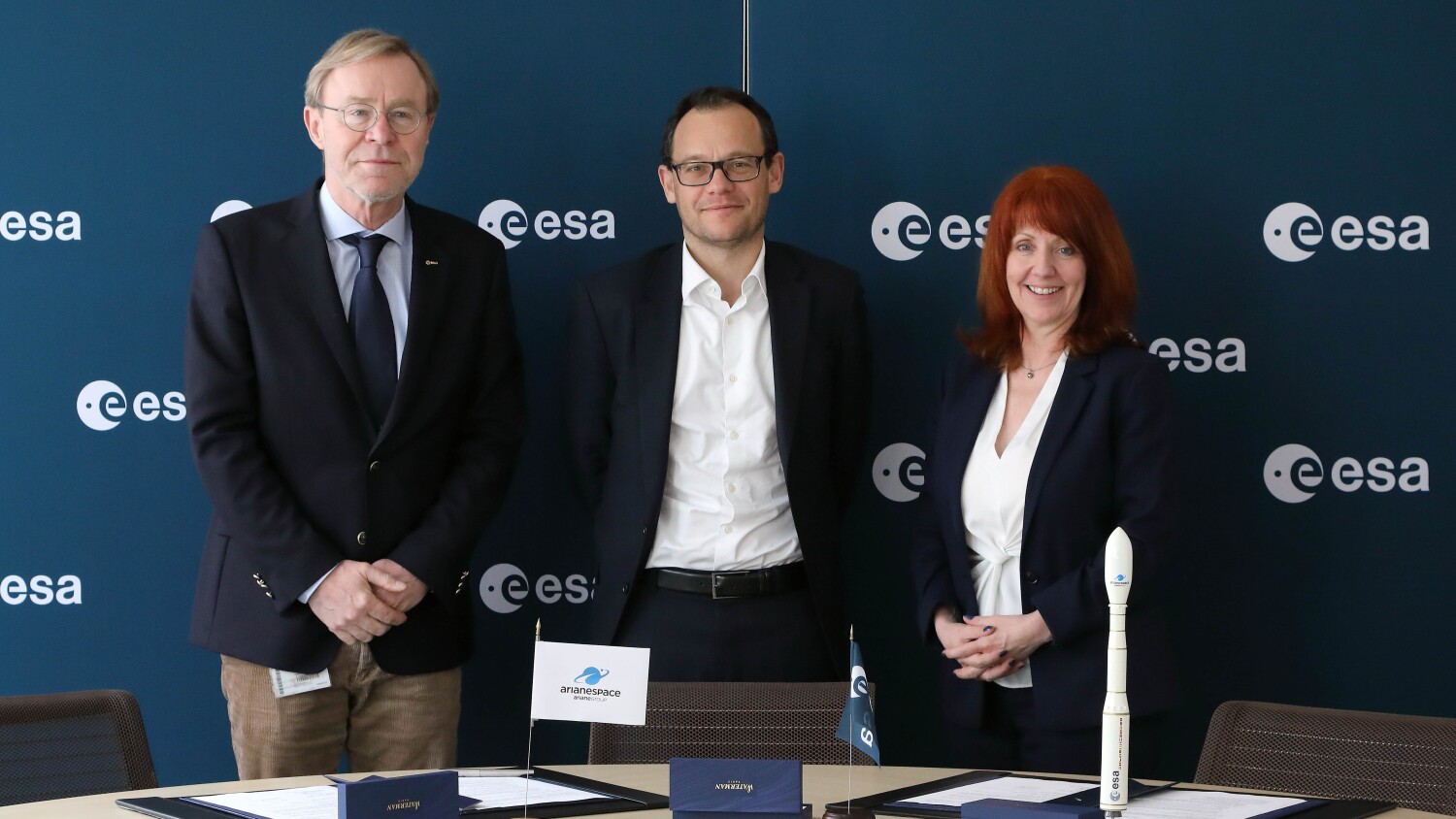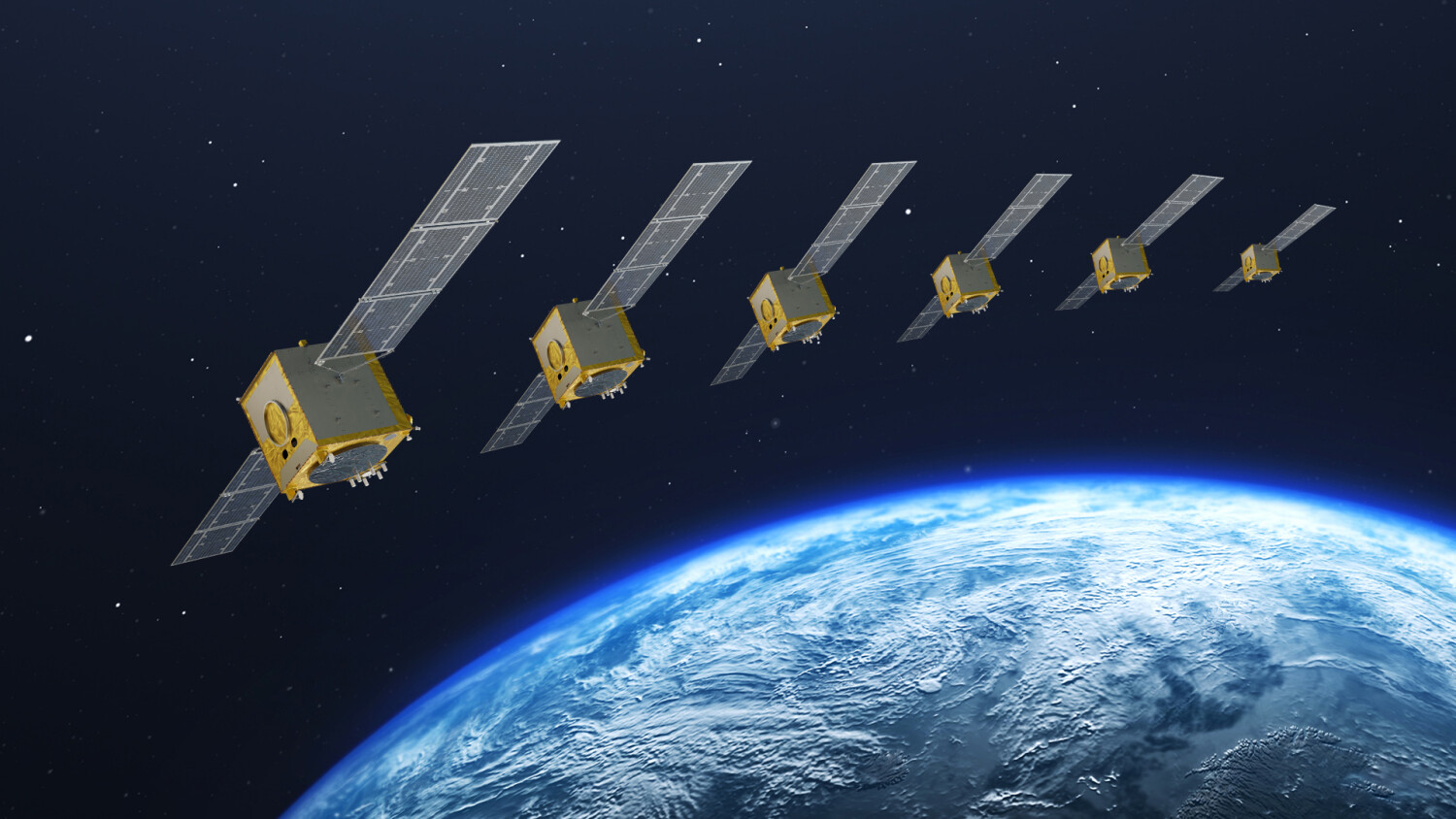- Arianespace’s upcoming Vega launch, scheduled for April 28, 2021, will orbit Pleiades Neo 3, the first very high-resolution satellite in the new Earth observation constellation operated by Airbus Defence and Space.
– Following the success of Europe’s first rideshare mission last September, Vega Flight 18 (VV18) will deploy five auxiliary payloads using the advanced SSMS (Small Spacecraft Mission Service) structure.
– Both launch production and launch preparations strictly followed the recommendations issued by the Independent Inquiry Commission set up for the previous Vega mission, VV17.
On Wednesday, April 28, 2021 at 10:50 pm local time (01:50 UTC on Thursday, April 29), Arianespace’s first Vega mission of the year will lift off from the Guiana Space Center, Europe’s Spaceport in French Guiana, with the optical observation satellite Pleiades Neo 3. The first of four satellites in an advanced Earth observation constellation, Pleiades Neo 3 was wholly funded and manufactured by its operator, Airbus.
The 18th mission of Europe’s Vega light launcher will also orbit an observation microsatellite for the Norwegian space agency, Norsat-3, plus four cubesats for the operators Eutelsat, NanoAvionics/Aurora Insight and Spire. These small satellites will be carried as auxiliary payloads on the innovative Small Spacecraft Mission Service (SSMS) deployment system. The SSMS rideshare service, developed with the support of the European space industry, was first deployed by Arianespace in September 2020. Funded by the European Space Agency (ESA), Arianespace’s SSMS service will soon be joined by the Multiple Launch Service (MLS), a similar offering that uses the Ariane 6 launch vehicle. With these two services, Arianespace can offer a wide range of affordable launch opportunities for small satellites and constellations.
After liftoff from the Guiana Space Center, the Vega launcher will fly for a little over six minutes, powered by the first three stages. The third stage will then fall back after separating from the upper composite, which comprises the AVUM upper stage, the Pleiades Neo 3 satellite, the SSMS and its five auxiliary passengers. The AVUM stage will ignite its engine for the first time, in a powered phase lasting about eight minutes, followed by a ballistic phase lasting 37 minutes. The AVUM stage will then restart its engine for a second burn lasting a little over one minute, before releasing the Pleiades Neo 3 satellite. The next two AVUM ignition phases will last about 37 minutes in all, followed by the release of the five auxiliary payloads. That will mark the end of mission VV18, one hour and 42 minutes after liftoff.
The production of the Vega launcher and preparations for mission VV18 were meticulously overseen by Avio, industrial prime contractor for the Vega launcher, under the direction of Arianespace and ESA. They followed all recommendations issued by the Independent Inquiry Commission set up after the failure of the 17th Vega mission (VV17).
About Arianespace
Arianespace uses space to make life better on Earth by providing launch services for all types of satellites into all orbits. It has orbited almost 800 satellites since 1980, using its family of three launchers, Ariane, Soyuz and Vega, from launch sites in French Guiana (South America) and from the Russian cosmodromes in Baikonur and Vostochny. Arianespace is headquartered in Evry, near Paris, and has a technical facility at the Guiana Space Center in French Guiana, plus local offices in Washington, D.C., Tokyo and Singapore. Arianespace is a subsidiary of ArianeGroup, which holds 74% of its share capital, with the balance held by 15 other shareholders from the European launcher industry.







